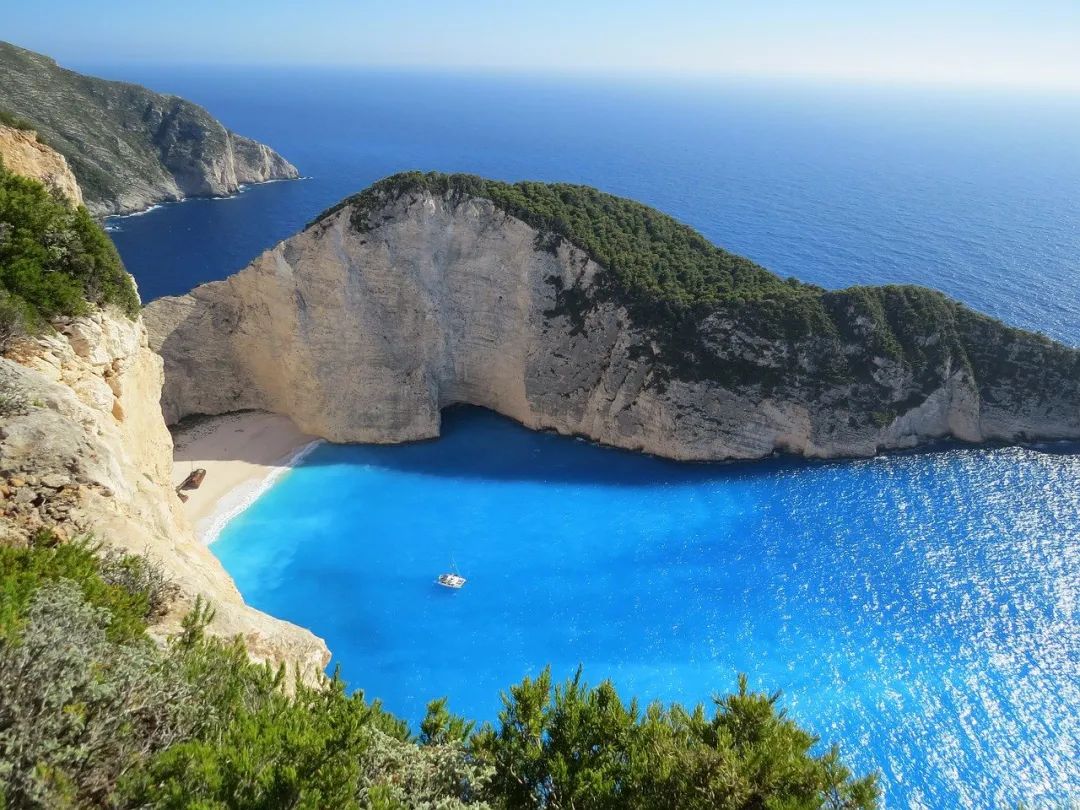2024年GMAT考试阅读模拟试题及答案3

No very satisfactory account of the mechanism that caused the formation of the ocean basins has yet been given. The traditional view supposes that the upper mantle of the earth behaves as a liquid when it is subjected to small forces for long periods and that differences in temperature under oceans and continents are sufficient to produce convection in the mantle of the earth with rising convection currents under the mid-ocean ridges and sinking currents under the continents. Theoretically, this convection would carry the continental plates along as though they were on a conveyor belt (conveyor belt: n. 传送带) and would provide the forces needed to produce the split that occurs along the ridge. This view may be correct: it has the advantage that the currents are driven by temperature differences that themselves depend on the position of the continents. Such a back-coupling, in which the position of the moving plate has an impact on the forces that move it, could produce complicated and varying motions.
On the other hand, the theory is implausible because convection does not normally occur along lines, and it certainly does not occur along lines broken by frequent offsets (an abrupt bend in an object by which one part is turned aside out of line) or changes in direction, as the ridge is. Also it is difficult to see how the theory applies to the plate between the Mid-Atlantic Ridge and the ridge in the Indian Ocean. This plate is growing on both sides, and since there is no intermediate trench, the two ridges must be moving apart. It would be odd if the rising convection currents kept exact pace with them. An alternative theory is that the sinking part of the plate, which is denser than the hotter surrounding mantle, pulls the rest of the plate after it. Again it is difficult to see how this applies to the ridge in the South Atlantic, where neither the African nor the American plate has a sinking part.
Another possibility is that the sinking plate cools the neighboring mantle and produces convection currents that move the plates. This last theory is attractive because it gives some hope of explaining the enclosed seas, such as the Sea of Japan. These seas have a typical oceanic floor, except that the floor is overlaid by several kilometers of sediment. Their floors have probably been sinking for long periods. It seems possible that a sinking current of cooled mantle material on the upper side of the plate might be the cause of such deep basins. The enclosed seas are an important feature of the earth’s surface, and seriously require explanation because, in addition to the enclosed seas that are developing at present behind island arcs, there are a number of older ones of possibly similar origin, such as the Gulf of Mexico, the Black Sea, and perhaps the North Sea.
1. According to the traditional view of the origin of the ocean basins, which of the following is sufficient to move the continental plates?
(A) Increases in sedimentation on ocean floors
(B) Spreading of ocean trenches
(C) Movement of mid-ocean ridges
(D) Sinking of ocean basins
(E) Differences in temperature under oceans and continents
2. It can be inferred from the passage that, of the following, the deepest sediments would be found in the
(A) Indian Ocean
(B) Black Sea
(C) Mid-Atlantic
(D) South Atlantic
(E) Pacific
3. The author refers to a “conveyor belt” in line 13 in order to
(A) illustrate the effects of convection in the mantle
(B) show how temperature differences depend on the positions of the continents
(C) demonstrate the linear nature of the Mid-Atlantic Ridge
(D) describe the complicated motions made possible by back-coupling
(E) account for the rising currents under certain mid-ocean ridges
4. The author regards the traditional view of the origin of the oceans with
(A) slight apprehension
(B) absolute indifference
(C) indignant anger
(D) complete disbelief
(E) guarded skepticism
5. According to the passage, which of the following are separated by a plate that is growing on both sides?
(A) The Pacific Ocean and the Sea of Japan
(B) The South Atlantic Ridge and the North Sea Ridge
(C) The Gulf of Mexico and the South Atlantic Ridge
(D) The Mid-Atlantic Ridge and the Indian Ocean Ridge
(E) The Black Sea and the Sea of Japan
6. Which of the following, if it could be demonstrated, would most support the traditional view of ocean formation?
(A) Convection usually occurs along lines.
(B) The upper mantle behaves as a dense solid.
(C) Sedimentation occurs at a constant rate.
(D) Sinking plates cool the mantle.
(E) Island arcs surround enclosed seas.
7. According to the passage, the floor of the Black Sea can best be compared to a
(A) rapidly moving conveyor belt
(B) slowly settling foundation
(C) rapidly expanding balloon
(D) violently erupting volcano
(E) slowly eroding mountain
8. Which of the following titles would best describe the content of the passage?
(A) A Description of the Oceans of the World
(B) Several Theories of Ocean Basin Formation
(C) The Traditional View of the Oceans
(D) Convection and Ocean Currents
(E) Temperature Differences among the Oceans of the World
参考答案:EBAE DABB
No very satisfactory account of the mechanism that caused the formation of the ocean basins has yet been given. The traditional view supposes that the upper mantle of the earth behaves as a liquid when it is subjected to small forces for long periods and that differences in temperature under oceans and continents are sufficient to produce convection in the mantle of the earth with rising convection currents under the mid-ocean ridges and sinking currents under the continents. Theoretically, this convection would carry the continental plates along as though they were on a conveyor belt (conveyor belt: n. 传送带) and would provide the forces needed to produce the split that occurs along the ridge. This view may be correct: it has the advantage that the currents are driven by temperature differences that themselves depend on the position of the continents. Such a back-coupling, in which the position of the moving plate has an impact on the forces that move it, could produce complicated and varying motions.
On the other hand, the theory is implausible because convection does not normally occur along lines, and it certainly does not occur along lines broken by frequent offsets (an abrupt bend in an object by which one part is turned aside out of line) or changes in direction, as the ridge is. Also it is difficult to see how the theory applies to the plate between the Mid-Atlantic Ridge and the ridge in the Indian Ocean. This plate is growing on both sides, and since there is no intermediate trench, the two ridges must be moving apart. It would be odd if the rising convection currents kept exact pace with them. An alternative theory is that the sinking part of the plate, which is denser than the hotter surrounding mantle, pulls the rest of the plate after it. Again it is difficult to see how this applies to the ridge in the South Atlantic, where neither the African nor the American plate has a sinking part.
Another possibility is that the sinking plate cools the neighboring mantle and produces convection currents that move the plates. This last theory is attractive because it gives some hope of explaining the enclosed seas, such as the Sea of Japan. These seas have a typical oceanic floor, except that the floor is overlaid by several kilometers of sediment. Their floors have probably been sinking for long periods. It seems possible that a sinking current of cooled mantle material on the upper side of the plate might be the cause of such deep basins. The enclosed seas are an important feature of the earth’s surface, and seriously require explanation because, in addition to the enclosed seas that are developing at present behind island arcs, there are a number of older ones of possibly similar origin, such as the Gulf of Mexico, the Black Sea, and perhaps the North Sea.
1. According to the traditional view of the origin of the ocean basins, which of the following is sufficient to move the continental plates?
(A) Increases in sedimentation on ocean floors
(B) Spreading of ocean trenches
(C) Movement of mid-ocean ridges
(D) Sinking of ocean basins
(E) Differences in temperature under oceans and continents
2. It can be inferred from the passage that, of the following, the deepest sediments would be found in the
(A) Indian Ocean
(B) Black Sea
(C) Mid-Atlantic
(D) South Atlantic
(E) Pacific
3. The author refers to a “conveyor belt” in line 13 in order to
(A) illustrate the effects of convection in the mantle
(B) show how temperature differences depend on the positions of the continents
(C) demonstrate the linear nature of the Mid-Atlantic Ridge
(D) describe the complicated motions made possible by back-coupling
(E) account for the rising currents under certain mid-ocean ridges
4. The author regards the traditional view of the origin of the oceans with
(A) slight apprehension
(B) absolute indifference
(C) indignant anger
(D) complete disbelief
(E) guarded skepticism
5. According to the passage, which of the following are separated by a plate that is growing on both sides?
(A) The Pacific Ocean and the Sea of Japan
(B) The South Atlantic Ridge and the North Sea Ridge
(C) The Gulf of Mexico and the South Atlantic Ridge
(D) The Mid-Atlantic Ridge and the Indian Ocean Ridge
(E) The Black Sea and the Sea of Japan
6. Which of the following, if it could be demonstrated, would most support the traditional view of ocean formation?
(A) Convection usually occurs along lines.
(B) The upper mantle behaves as a dense solid.
(C) Sedimentation occurs at a constant rate.
(D) Sinking plates cool the mantle.
(E) Island arcs surround enclosed seas.
7. According to the passage, the floor of the Black Sea can best be compared to a
(A) rapidly moving conveyor belt
(B) slowly settling foundation
(C) rapidly expanding balloon
(D) violently erupting volcano
(E) slowly eroding mountain
8. Which of the following titles would best describe the content of the passage?
(A) A Description of the Oceans of the World
(B) Several Theories of Ocean Basin Formation
(C) The Traditional View of the Oceans
(D) Convection and Ocean Currents
(E) Temperature Differences among the Oceans of the World
参考答案:EBAE DABB









